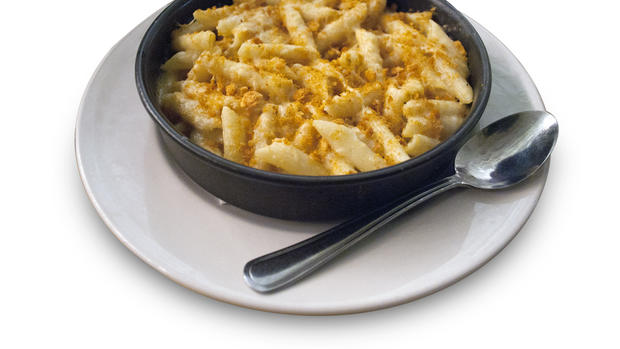Cutting salt to recommended levels could prevent hundreds of thousands deaths
Too much sodium can raise a person's risk for high blood pressure, heart disease, stroke and other vascular diseases, and government estimates show 90 percent of Americans exceed their recommended daily allotment.
Now, new research shows that by reducing sodium intake to recommended levels or beyond could prevent hundreds of thousands of deaths.
"No matter how we look at it, the story is the same - there will be huge benefits in reducing sodium," study author Dr. Pam Coxson, mathematician UC San Francisco who performed one of three analyses included in the study, told UCSF News.
Americans on average consume about 3,600 milligrams of sodium each day, mostly from table salt (or sodium chloride), which is found primarily in processed foods. The top six sources of sodium in the American diet according to the American Heart Association, or "The Salty Six" are bread and rolls, cold cuts and cured meats, pizza, poultry, soup and sandwiches. The government recommends a limit of 2,300 milligrams per day of sodium and 1,500 milligrams for those 51 and older while the AHA recommends 1,500 milligrams each day.
The Centers for Disease Control and Prevention said that excess sodium is one of the factors that can raise the risk for heart disease. For the month of February, National Heart Month, the CDC offers 28 tips for a healthier heart.
- "Salty six" foods a major source of sodium, says American Heart Association
- Mayor Bloomberg: 21 food companies cut salt from popular products
- Targeting kids' salt intake may curb childhood obesity rates
For the study, researchers at three medical schools each conducted their own analysis to project the health effects over a 10 year period from reducing sodium intake by three increments: a gradual 40 percent reduction in sodium to 2,200 milligrams per day, an instant reduction in sodium to 2,200 milligrams per day, or an instant reduction to no more than the AHA-recommended 1,500 milligrams of sodium per day.
The researchers from UCSF, Harvard Medical School in Boston and Simon Fraser University in British Columbia Canada each used different simulation models looking at different outcomes but they reached similar conclusions: Reducing salt from diets was projected to save lots of American lives.
They found a gradual sodium reduction of as little as 5 percent of a teaspoon of salt per day, eventually reaching 2,200 milligrams of sodium per day, was projected to save between 280,000 and 500,000 lives over a 10-year-period. A plummet from current U.S. sodium intake averages to 1,500 milligrams per day could prevent 700,000 to 1.2 million deaths over a decade.
By instantly reducing sodium intake by 40 percent to the recommended allotment, the researchers found between 500,000 and 850,000 premature deaths could be averted -- about 60 percent more deaths than saved in the gradual reduction model.
The study was published online Feb. 11 in the AHA journal, Hypertension.
"It is helpful when three research groups use different approaches and come up with similar results," study co-author Dr. Kirsten Bibbins-Domingo, director of the UCSF Center for Vulnerable Populations, said in a press release. "Such gradual [sodium] reductions could be achieved through a combination of consumer education and food labeling, but should likely also include regulation to assure that lower sodium options are available for US consumers."
Several companies have already begun voluntarily reducing salt from their products.
New York City Mayor Michael Bloomberg announced Feb. 12 that 21 food and restaurant companies had voluntarily reduced the salt content in some of their products as part of the National Salt Reduction Initiative. Examples included Kraft reducing sodium in its Kraft Singles American Slices by 18 percent, Unilever cutting sodium by 20 percent for its Ragu Old World Style Traditional Tomato Sauce, and Subway reducing sodium by about 30 percent from its Italian B.M.T. and Subway Club sandwiches.


